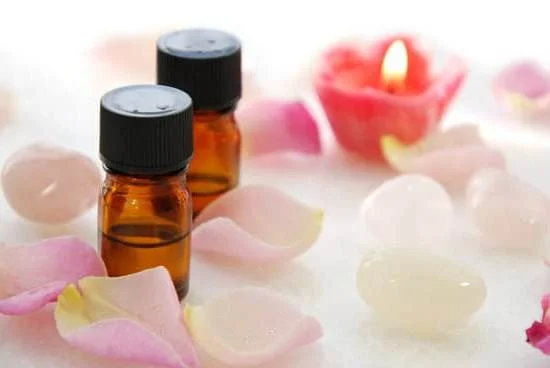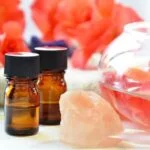An increasing number of people are turning to aromatherapy as a natural way to promote relaxation, manage stress, and enhance overall well-being. Aromatherapy inhalers have emerged as a popular choice for convenient and personal aromatherapy experiences. In this article, we will guide you through the process of making your own aromatherapy inhaler, allowing you to customize it with essential oils that cater to your specific needs.
Aromatherapy inhalers offer numerous benefits that contribute to their growing popularity. First and foremost, they provide an easy and portable way to experience the therapeutic effects of essential oils wherever and whenever you need them. Unlike diffusers or topical applications, inhalers allow you to directly inhale the aromatic compounds, which can quickly reach your brain via the olfactory system, triggering immediate physiological responses.
Understanding the basics of how aromatherapy inhalers work is crucial in creating a personalized experience. In this article, we will delve into what exactly an aromatherapy inhaler is and how it differs from other methods of aromatherapy. By understanding these fundamentals, you will be able to appreciate the unique benefits that inhalers offer and make informed decisions when selecting your preferred method of aromatherapy.
By learning how to make your own aromatherapy inhaler, you gain control over every aspect of your aromatic experience. We will discuss different essential oils available in the market and their distinct therapeutic properties, helping you select oils that align with your specific goals or needs.
Moreover, we will guide you through gathering all the necessary supplies for crafting an effective inhaler. From the vessel itself to the wick and essential oils, we’ll provide you with a comprehensive list so that you have everything ready when starting on this exciting journey.
In this article, we aim to empower readers by sharing step-by-step instructions on creating their own customized aromatherapy inhaler. We will guide you through the assembly process, ensuring that you correctly attach the wick and add the essential oils in the appropriate amounts. Additionally, we will encourage personalization and customization, allowing you to add your own unique touch to your inhaler with custom labels or decorative accents.
Keep reading to discover tips and guidelines for using and storing aromatherapy inhalers safely. We want to ensure that you have the best experience possible while keeping the longevity of your inhaler in mind. Furthermore, we will explore different blends of essential oils for specific purposes, whether it’s stress relief, improved focus, or relaxation. Finally, we’ll provide ideas on how to enhance your overall aromatherapy routine by incorporating the inhaler into meditation or mindful practices.
The benefits of making your own aromatherapy inhaler are undeniable. It empowers you with a personalized tool that can address your specific needs almost anywhere at any time. So why not give it a try? Read on to find out everything you need to know about making an aromatherapy inhaler and embark on a journey towards improved well-being through aromatic experiences.
Understanding the Basics
An aromatherapy inhaler, sometimes referred to as a nasal inhaler or aroma stick, is a compact and portable device that allows individuals to experience the therapeutic benefits of essential oils through inhalation. Unlike other methods of aromatherapy that involve diffusers or topical application, an inhaler offers a more direct and individualized approach to enjoying the healing properties of essential oils.
One key feature that sets aromatherapy inhalers apart from other methods is their convenience and portability. The small size of these inhalers makes them easy to carry in a pocket, purse, or bag, allowing users to have their chosen aromatherapy blend readily available whenever needed. Whether you are at work, traveling, or simply on-the-go, an inhaler provides a discreet and convenient way to enjoy the benefits of aromatherapy without the need for bulky diffusers or messy oils.
Another important distinction is how an aromatherapy inhaler targets the olfactory system. When inhaling through the nose, molecules from the essential oils interact with olfactory receptors in the nasal cavity. These receptors then send signals to the brain’s limbic system, which is responsible for emotions, memory, and mood regulation. This direct pathway allows for quick absorption and immediate effects on both a physical and emotional level.
Using an aromatherapy inhaler also offers precise control over the intensity and duration of exposure to essential oils. By adjusting the number of times you inhale or how deep your breaths are, you can customize your experience based on personal preference or specific therapeutic needs. This level of control is particularly beneficial for individuals who may be more sensitive to certain scents or have specific health concerns.
In summary, an aromatherapy inhaler provides a convenient and targeted way to experience the healing properties of essential oils through inhalation. Its small size and portability make it ideal for daily use at home or on-the-go.
Additionally, its direct interaction with the olfactory system allows for quick and efficient absorption of essential oil molecules, triggering a range of physical and emotional responses. Understanding the basics of an aromatherapy inhaler sets the foundation for creating a personalized and effective aromatherapy experience.
Choosing Your Essential Oils
Choosing the right essential oils for your aromatherapy inhaler is crucial in order to achieve the desired therapeutic effects. Each essential oil has its own unique properties and benefits, making it important to understand their individual characteristics before making your selection.
There are a wide variety of essential oils available, each with different therapeutic properties. Some common oils used in aromatherapy inhalers include lavender, peppermint, eucalyptus, and lemon. Lavender oil is known for its calming and relaxing properties, making it great for reducing stress and promoting restful sleep.
Peppermint oil is invigorating and energizing, making it a popular choice for promoting focus and mental clarity. Eucalyptus oil is often used to relieve congestion and promote respiratory health. Lemon oil is uplifting and refreshing, making it ideal for boosting mood and increasing energy levels.
Before choosing your essential oils, consider the specific benefits you are looking to achieve with your aromatherapy inhaler. If you are feeling stressed or anxious, you may want to choose calming oils such as lavender or chamomile. If you need an energy boost or help with concentration, consider using invigorating oils like peppermint or rosemary.
| Essential Oil | Therapeutic Properties |
|---|---|
| Lavender | Calming, Relaxing |
| Peppermint | Invigorating, Energizing |
| Eucalyptus | Respiratory Relief |
| Uplifting, Refreshing | |
| Sleep-inducing, Soothing | |
| Focused, Stimulating |
When selecting your essential oils, it is also important to consider potential allergies or sensitivities. If you know that you have a sensitivity to a particular plant or have experienced any adverse reactions in the past, it is best to avoid using that specific essential oil.
Experimenting with different combinations of essential oils can also be beneficial. Aromatherapy inhalers allow for easy mixing of oils, so you can create your own personalized blends. Combining oils with complementary properties can enhance their effectiveness and provide a more holistic experience.
Remember, choosing the right essential oils for your aromatherapy inhaler is a highly personal decision. Take the time to explore different oils and their therapeutic benefits to find the perfect combination for your needs.
Gathering Supplies
When it comes to creating your own aromatherapy inhaler, it’s important to gather all the necessary supplies beforehand. Having everything you need prepared will make the assembly process smoother and more enjoyable. Here is a comprehensive list of materials needed to create an aromatherapy inhaler:
- Inhaler Vessel: The first item on the list is the inhaler vessel itself. This is a small, portable container specifically designed for holding essential oils and allowing for easy inhalation. Inhalers often come in a tube or stick format with a removable cap on one end and a wick holder on the other.
- Wick: The wick is an essential component of an aromatherapy inhaler as it absorbs and carries the essential oils that provide therapeutic benefits. When selecting a wick, make sure to choose one that is made from a material that allows for maximum absorption, such as cotton or unbleached fabric strips.
- Essential Oils: The choice of essential oils is crucial in creating an effective aromatherapy inhaler. Each essential oil possesses unique therapeutic properties that can support different health concerns or emotions. Some popular choices include lavender for relaxation, peppermint for focus, eucalyptus for respiratory support, and lemon for uplifting mood.
- Optional Supplies: While not necessary, there are additional supplies you may want to consider for personalization or convenience purposes. These include labels to identify your inhaler blends, decorative accents like stickers or washi tape to add flair, and tweezers or droppers for easier handling of the wick and essential oils.
By gathering these supplies ahead of time, you’ll be well-prepared to embark on your aromatherapy inhaler-making journey. Experimenting with different combinations of essential oils and personalizing your inhalers will allow you to create unique blends that cater to your specific needs and preferences.
Step-by-Step Instructions
To assemble your own aromatherapy inhaler, follow these step-by-step instructions:
- Step 1: Gather all the necessary supplies. You will need an inhaler vessel, wick, and essential oils of your choice. Make sure you have everything on hand before starting the assembly process.
- Step 2: Start by removing the bottom cap of the inhaler vessel. This is where you will add your essential oils.
- Step 3: Take the wick and apply a few drops of your chosen essential oil onto it. Be careful not to saturate the wick as this may cause leakage.
- Step 4: Insert the wick into the inhaler vessel, making sure it is fully inserted but not sticking out of the top.
- Step 5: Once the wick is securely in place, put back on the bottom cap of the inhaler vessel.
It is important to note that each inhaler vessel may have slightly different assembly instructions, so it’s always advisable to read and follow any specific instructions provided by the manufacturer.
Lastly, don’t forget to label your aromatherapy inhaler with a custom label or decorative accent if desired. This will not only make it visually appealing but also help identify which blend or scent you have in each inhaler.
By following these step-by-step instructions, you can create your own personalized aromatherapy inhaler tailored to your specific needs and preferences.
Personalization and Customization
Creating your own aromatherapy inhaler not only allows you to enjoy the therapeutic benefits of essential oils on the go, but it also provides an opportunity for personalization and customization. Adding your own personal touch to your inhaler can make the experience even more enjoyable and meaningful.
One way to personalize your aromatherapy inhaler is by creating custom labels. You can design and print labels that reflect your unique style or use labels with inspirational quotes or affirmations. Alternatively, you can handwrite labels using colorful pens or markers. This not only helps you easily identify different blends but also adds a personal aesthetic element to your inhaler.
In addition to custom labels, you can also consider adding decorative accents to your aromatherapy inhaler. This could include attaching small trinkets, charms, or beads to the vessel of the inhaler using a string or adhesive. You may choose items that hold special meaning for you or simply select decorative elements that enhance the visual appeal of your inhaler.
Taking the time to personalize and customize your aromatherapy inhaler allows you to make it truly unique and reflective of your personality and preferences. It can also serve as a reminder of self-care and mindfulness throughout the day, enhancing the overall experience of using the inhaler.
| Personalization Ideas | Description |
|---|---|
| Create custom labels | Design and print labels that reflect your style or use handwritten labels with colorful pens. |
| Add decorative accents | Attach trinkets, charms, or beads to the inhaler vessel using string or adhesive. |
Safe Usage and Storage
Using and storing aromatherapy inhalers properly is essential to ensure the best possible experience and longevity. Here are some important tips and guidelines for safe usage and storage:
Proper Usage
When using your aromatherapy inhaler, it’s important to follow these guidelines:
- Inhale deeply through your nose, allowing the scent of the essential oils to reach your olfactory system.
- Hold each inhalation for a few seconds before exhaling.
- Use your inhaler whenever you feel the need for a boost or relaxation, but avoid excessive use as prolonged exposure to strong scents may cause headaches or other sensitivities.
Storage
Proper storage helps preserve the potency of the essential oils in your inhaler:
- Keep your inhaler in a cool, dark place away from direct sunlight and heat sources to prevent degradation of the essential oils.
- Store it in an airtight container or ziplock bag when not in use to minimize exposure to oxygen and maintain its freshness.
Cleaning
Regular cleaning helps maintain hygiene and prevents contamination:
- Disassemble your inhaler (if possible) and clean all parts with warm soapy water after every few uses or whenever you change essential oils.
- Rinse thoroughly with water to ensure no soap residue remains.
- Allow all components to dry completely before reassembling.
Shelf Life
Essential oils have varying shelf lives, so it’s important to keep track of when they were added to your inhaler:
- Most essential oils have a shelf life of 1-2 years if stored properly, but some may last even longer.
- Make note of the date when you add each oil and replace them accordingly once they have expired.
By following these tips, you can ensure that your aromatherapy inhaler provides you with a safe and effective experience every time you use it. Proper usage, storage, cleaning, and shelf life management will help maximize the benefits of the essential oils and prolong the lifespan of your inhaler.
Exploring Different Blends
One of the exciting aspects of creating your own aromatherapy inhaler is the ability to customize the blend of essential oils to suit your specific needs and preferences. Different essential oils have unique therapeutic properties that can help target specific issues such as stress relief, improved focus, or relaxation. In this section, we will explore a variety of suggested essential oil blends for different purposes.
For stress relief, consider blending lavender, bergamot, and chamomile essential oils. Lavender is well-known for its calming and soothing properties, while bergamot can help alleviate anxiety and promote relaxation. Chamomile further enhances these effects with its gentle sedative qualities. Together, these essential oils create a powerful blend that can help you unwind after a long day and find inner peace.
To improve focus and concentration, try combining rosemary, peppermint, and lemon essential oils. Rosemary has been shown to enhance memory retention and cognitive performance, while peppermint stimulates mental clarity and alertness. Lemon provides an uplifting and invigorating scent that can boost productivity. This blend is perfect for when you need to stay focused during work or study sessions.
For relaxation and a restful sleep, experiment with a blend of lavender, Roman chamomile, and vetiver essential oils. Lavender promotes deep relaxation by reducing nervous tension and helps support quality sleep. Roman chamomile has sedative properties that induce calmness and tranquility. Vetiver’s woody aroma grounds the mind and encourages feelings of security. This combination is ideal to use before bedtime to create a peaceful atmosphere conducive to restful slumber.
Remember that these are just suggestions, and you can mix and match different essential oils based on your preferences. It’s important to note that some individuals may have sensitivities or allergies to certain essential oils, so always perform a patch test before using a new blend.
By exploring different essential oil blends for various purposes, you can create an aromatherapy inhaler that fits your unique needs and helps you achieve your desired outcomes. It’s all about finding the right combinations that resonate with you and support your overall well-being.
Enhancing the Experience
Incorporating an aromatherapy inhaler into your daily routine can enhance the overall experience and benefits of this therapeutic practice. One way to further enhance the effects is by combining the use of the inhaler with meditation or mindful practices. Meditation and mindfulness are known for their ability to calm the mind, reduce stress, and promote relaxation. By adding the aromatic scents of essential oils through an inhaler, you can create a more immersive and soothing experience.
To incorporate your aromatherapy inhaler into meditation, find a comfortable and quiet space where you can sit or lie down. Begin by taking a few deep breaths using your inhaler, allowing the calming scent to fill your senses. As you continue to breathe in and out, focus your attention on the present moment and bring awareness to each inhale and exhale. The aroma from the essential oils can help anchor your attention and deepen your state of relaxation during meditation.
In addition to meditation, you can also integrate your aromatherapy inhaler into other mindful practices such as yoga or journaling. Before starting your yoga practice, take a moment to breathe in the essential oils from your inhaler, allowing yourself to become fully present in the moment. The aroma can enhance concentration, mindfulness, and overall enjoyment of the practice.
Similarly, if you have a journaling routine, try using your inhaler before beginning to write. Inhaling the soothing scents of essential oils can help calm any racing thoughts or stress that may be hindering creative expression. It can also create a peaceful environment for self-reflection and introspection.
By incorporating aromatherapy inhalers into these mindful practices, you not only enjoy their individual benefits but also synergistically enhance their effects through aromatic stimulation. Experiment with different scents when meditating, practicing yoga, or journaling to find the combinations that resonate most with your intentions and goals.
Remember, creating a complete aromatherapy routine involves exploring and personalizing what works best for you. Adjust your practice as needed and have fun experimenting with various essential oil blends that suit your preferences and desired outcomes. The key is to listen to your body, be present in the moment, and let the power of aromatherapy enhance your overall well-being.
Conclusion
In conclusion, making your own aromatherapy inhaler can be a rewarding and beneficial experience. Throughout this article, we have explored the benefits of aromatherapy inhalers and why they are growing in popularity. We have learned that these inhalers provide a convenient and portable way to enjoy the therapeutic properties of essential oils.
Understanding the basics of aromatherapy inhalers, including how they differ from other methods of aromatherapy, is crucial for creating an effective and personalized experience. By choosing the right essential oils for your inhaler, you can harness their unique therapeutic properties and create blends tailored to your specific needs.
Gathering the necessary supplies and following the step-by-step instructions provided in this article will allow you to assemble your own personalized aromatherapy inhaler. Adding a personal touch through customization options such as decorative accents or custom labels can make this experience even more enjoyable.
Creating an aromatherapy routine that incorporates your inhaler into meditation or other mindful practices can enhance the overall experience and maximize its benefits. Lastly, exploring different essential oil blends for various purposes takes your aromatherapy journey to another level.
Frequently Asked Questions
How do you make an aromatherapy nasal inhaler?
To make an aromatherapy nasal inhaler, you will need a few key ingredients and materials. First, gather a small glass bottle with a tightly fitting lid, ideally designed for inhalation purposes. Then, choose the essential oil or blend of oils that you would like to use for your inhaler. It’s important to select oils that are safe for inhalation and suited to your desired purpose, such as promoting relaxation or clearing congestion.
Next, remove the cotton wick from the inhaler bottle and add a few drops (typically 10-15) of the chosen essential oil(s) directly onto the wick. Once you’ve added the oil, carefully place the wick back into the bottle and securely seal it with the lid. Your aromatherapy nasal inhaler is now ready to use whenever needed.
How many drops of oil do you put in an inhaler?
The number of drops of oil to put in an inhaler can vary depending on personal preference and the potency of the essential oil being used. However, as a general guideline, it is recommended to add around 10-15 drops of essential oil(s) to the cotton wick in an aromatherapy nasal inhaler.
This range allows for a balanced concentration that can effectively deliver aroma while avoiding overwhelming or irritant effects. It’s important to be mindful not to over-saturate the wick with too many drops, as this may cause leakage or difficulties inserting it back into the bottle.
How do you make homemade inhalation?
Creating homemade inhalations can be quite simple yet soothing when dealing with respiratory issues or seeking aromatic relief. Start by boiling a pot of water until it reaches a gentle simmering point; then reduce it down to low heat so that it continues to release steam without boiling vigorously. Next, carefully transfer hot water into a heat-safe bowl or basin large enough for you to lean over comfortably without risking burns or discomfort. Now is the time to add any desired ingredients such as herbs (e.g., eucalyptus, thyme) or essential oils to the hot water. These additions will infuse the steam with aromatic properties as you inhale it.
Lean over the bowl, cover your head and the bowl with a towel to create a tent-like enclosure, making sure to keep a safe distance from the water’s surface to prevent injury from steam. Breathe deeply and slowly through your nose, inhaling the therapeutic steam for around 10-15 minutes. Remember to close your eyes during this process and take breaks if necessary. This homemade inhalation method can help soothe congestion, clear sinuses, and provide a comforting experience for respiratory relief.

Are you looking for a natural way to improve your health and wellbeing?
If so, aromatherapy may be the answer for you.





